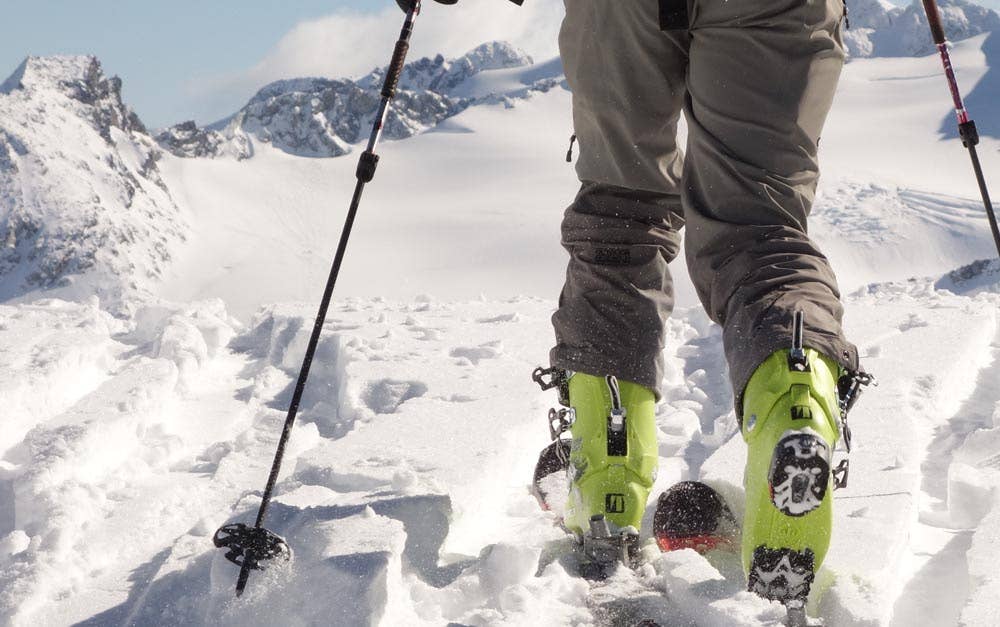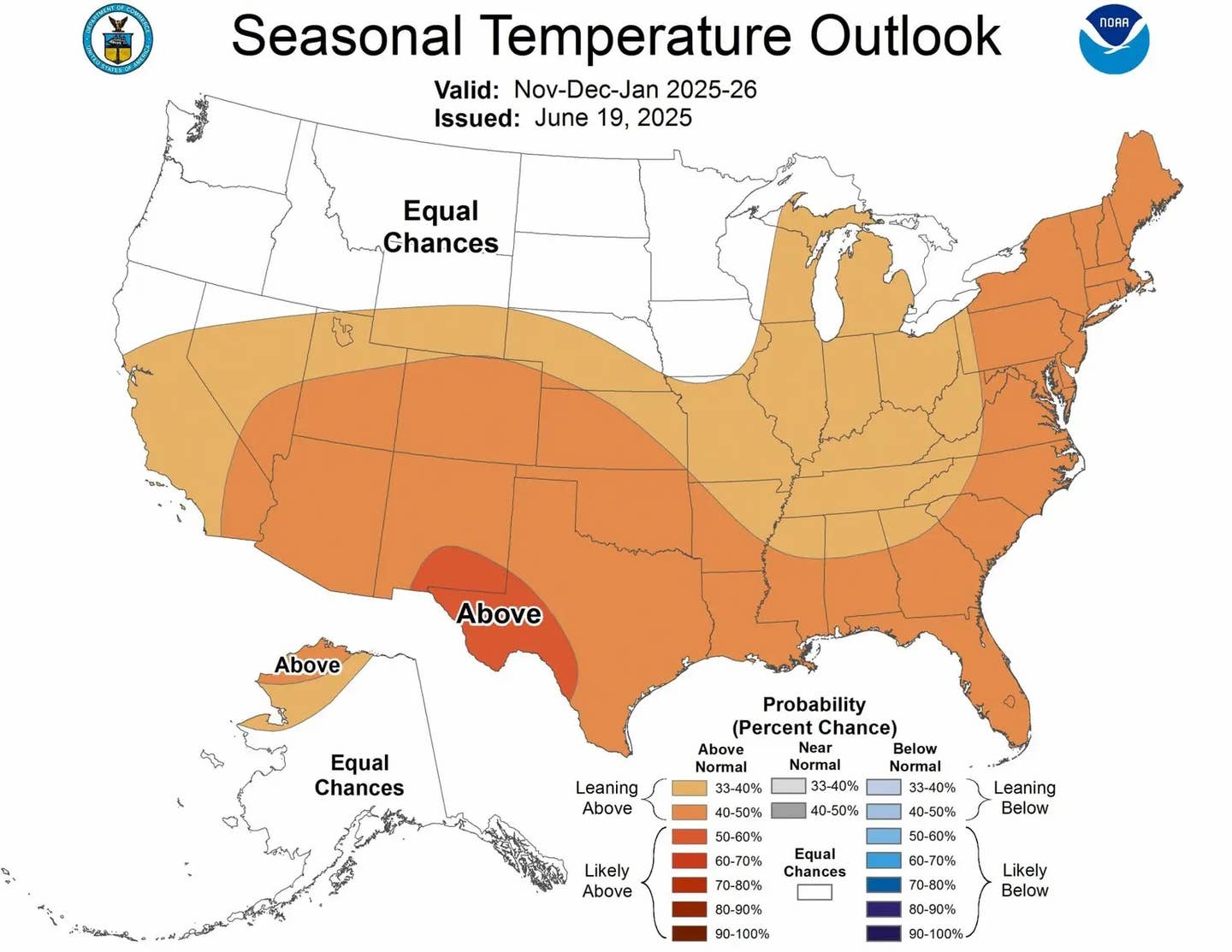Popular Stories

Check out the Tecnica Cochise 120 at evo.com today.
Long known as a brand for high-performance alpine racing, Tecnica's Cochise line of alpine touring boots has also built a solid reputation for reliability coupled with performance. Many insanely fussy skiers, such as Frank Konsella of 14erskiers, have long touted Cochise as being among the best boots in terms of pure skiing performance. These endorsements piqued this reviewers interest enough to request a pair ot Tecnica's neon-yellow Cochise 120 alpine touring boots for review.
The Cochise line is targeted towards side-country skiers, i.e. those whose ski day can involve a mix of inbound laps with an occasional hunt for backcountry pow. The Cochise is designed for versatility but with a pronounced bias towards downhill performance. New for this year is a more anatomical fit, a bit of weight reduction and 8 degrees more cuff movement for touring. Unchanged is the purported best-in-class skiing performance.
In summary, I found this the best fitting, and from a pure skiing perspective, the best-performing touring boot I've ever tried. So smooth, so progressive; the Cochise is the touring boot that's come the closest to duplicating that performance feel of an alpine boot yet while also possessing reasonable touring performance.
About Lee Lau
I weigh 160 pounds and ski mainly in the Coast and Selkirk Mountains of British Columbia. I had 11 days on the Cochise in snow of varying conditions. My skiing is usually in high moisture-content snow. Accordingly, my preference is for bigger skis and relatively stiff boots. Personally I own a pair of
Dynafit Vulcans and Scarpa Maestrale RS touring boots, but have had the opportunity to test a wide variety of boots that are now too numerous to count. So if you have a question comparing the Cochise to other boots ask in the article comments and I will try to answer.
I tested a size 26 Cochise (note that my normal boot size is 27 but the size 26 was recommended and fit perfectly).
Specifications and construction
Technically, the
Cochise 120 is a three buckle boot. However it's effectively a four buckle boot having the
Power Buckle–a power strap that comes with both the standard velcro closure and a cammed buckle that allows for vice-like tightness. Otherwise, the Cochise is a standard two-piece construction with lower and upper shell connected by metal pieces contained in an impressively beefy walk mechanism.
In the size 26.0 tested with stock liner, the Cochise 120 is not a light boot. The liner is the main source of extra weight, as it comes in at 461 grams and greatly contributes to the 1923 gram (actual measured) weight per 26.0 boot. Substitute
an Intuition liner as I did (and invariably do for all boots) and weight drops a full 240g per foot for a total boot weight of 1721g per boot; reasonable compared to other similar boots intended for similar purposes.

Tecnica's innovative Power Buckle–a top power strap with a buckle allows for quick transitions. Since I don't snug the power strap too tight, I can just flip open the top buckle and immediately be in walk mode. Then cinch it down and I can be in ski mode.

Comparing the Cochise 120 side-by-side with a Scarpa Maestrale RS, the Cochise's rear and front cuff are of similar heights.
The Cochise is made out of Triax 2.0 plastic which is claimed lighter and more durable. I did some digging and came up with the
tech sheets if you want to geek out. In isolation, I can't make head or tails of the marketing claims and could not find comparison on Triax vs Grilamid or Pebax plastic. I will say that the boot didn't noticeably change in stiffness in warmer conditions and holds a punch very well.

No-nonsense buckles are beefy yet light. They're slightly cammed so engage satisfyingly
The buckles seem really well-finished. There was griping about the range of adjustment in last year's Cochise plus the propensity of the buckles to develop play. This year's versions have a fair amount of micro-adjustment, they turn well and have no play after a half season of use and banging around on rocks and snow. While that's not a long-term review by any means it bodes well.
Speaking as to wear and tear, the old Tecnica soles are the same as the new soles. They are still mated in with a very solid feel via metal machine screws and inserts to the sole making for a rigid interface. Wear and tear on the soles is imperceptible. A bit more on the soles. The Cochise comes with a DIN sole for use with alpine bindings. The Cochise Pro comes with tech soles useable with tech bindings.
The heel fitting on the tech soles can be removed so you can insert a Dynafit Beast heel fitting. Either sole is available to be bought aftermarket for a price of $50.
The webbing pull tab mechanism on the walk mode is brilliant. No fumbling with gloves for a small iced-prone lever. This feature should be stock with other boots.
Tecnica Cochise 120–Fit

Four bolts screw into metal inserts in the boot to attach the soles. The DIN sole comes in the box. The tech sole is available separately as a separate purchase for $ 50. Perfect for those who abuse their soles on sled-decks, hiking, or just general wear and tear.
Join Our Newsletter
The Cochise's fit is where I am told there is substantial improvement over last years iteration. I speak only to the marketing since I had no experience with the past year's Tecnica's. Having said that, I've skied in the relatively box-like caverns of alpine touring boots of the past 10 years and am happy to say that the Cochise is, by far, the best fitting touring boot I've tried. As a baseline, I have Asian flat feet of medium volume but otherwise, my foot is as generic as can be. Happily I fit the Cochise with minimal tweaking and with the substitution of my footbeds and an
Intuition Luxury liner for the stock Tecnica liner I was perfectly happy.

Walk mode is beefy and allows for decent fore-aft motion (16 deg forward lean and minus 10 backward lean ie 26 degrees of cuff motion.) Buried in the walk mode mech is a metal to metal connection when the Cochise is in ski mode; making for a stiff platform.
The Cochise has an anatomical shape as compared to many other boots which are either bulbous or bullet-shaped to fit generically well in-shop for comfort but not for performance. Compared to past year's Cochise this new gen is tighter on the medial (inner) wall; has a prepunched navicular for more comfort in the instep and an anatomical heel pocket to improve heel hold. The anatomical nature of the boot means that, despite the 100mm last the Cochise is a lower volume boot fit which might not fit every one's feet well without some boot modifications. Accordingly it may not be feel terrific in the shop or on a carpet-test until customized for boot fit.. Aiding the fitting process are the many options available for tweaking fit including a removeable spoiler, a removeable bootboard and a plastic shell that holds punches well. Bottom line is that if you need boot-fitting, chances are that the Cochise can be customized to fit most feet.
How The Cochise 120 Tours & Skis

Decent walk mode for a boot of this class but do not mistake this for a boot for rando racers.
The Tecnica Cochise tours as expected given its class of boot, which is to say that it's neither good nor bad. Recall that Tecnica designed this boot for day trippers venturing out for sidecountry laps, and my faint praise will sound more like realism. There's an acceptable amount of fore-aft cuff movement. The Cochise is right about where it should be for weight. For downhill-uphill transitions the Cochise's design features played well for fast transfers. The walk mode webbing pull-tab mechanism is simple and effective. I also came to enjoy the Power Buckle cam device for touring, as I could simply flip the buckle open and immediately have sufficient touring motion. It's also worth noting that crampons fit on the toe and heel bails just fine and I would expect that one could walk around on rocks with Cochise on your feet about as well as with any other boot.
The Cochise in the backcountry The Cochise in the British Columbia backcountry.
The Cochise in the British Columbia backcountry.
Enough though about the touring performance. Where the
Cochise shines is in its performance and sheer smoothness of power delivery on the downhill. You may not realize how on-off other touring boots are until you've pleasured your feet with the Tecnica Cochise. I suspect that some of this smoothness comes down to the superior fit of the boot. It's worth mentioning that the Cochise's design appears to play no small part in this; in particular the anatomical nature of the boot shell design which holds one's foot in so well. Other key design features also aid in fit. For example, the Power Buckle distributes pressure well so that one can dial in tightness and hold over the upper cuff without having an uneven plastic-deformation crushing feel at the shins. The same holds true of the Cochise's buckles, which are wide and also distribute clamping force evenly.
This translates into a boot with an even fit and feel and without pressure points. It also meant that that I didn't particularly have to crank the boot buckles very tight in death grip fashion to get the feel of a performance fit. This no doubt aids in comfort, but also perversely seems to aid in power transfer.
If you've read this far then you're thinking "Well this must be the boot for me." The caveat is that you should read this article first about
Buying Touring Boots first. If you're a person who needs a "Freeride Touring" boot because the majority of your skiing will be inbounds with the minority (say 25% or so) being backcountry excursions then Tecnica's Cochise 120 (or variations thereof in their lineup) simply must enter the conversation.
Available in sizes 22.0 to 31.0 (shells change on the full size), the Cochise's MSRP is USD $735, although they're available now on evo.com for
$649.99.
Additional must-read links for touring boot buyers:






